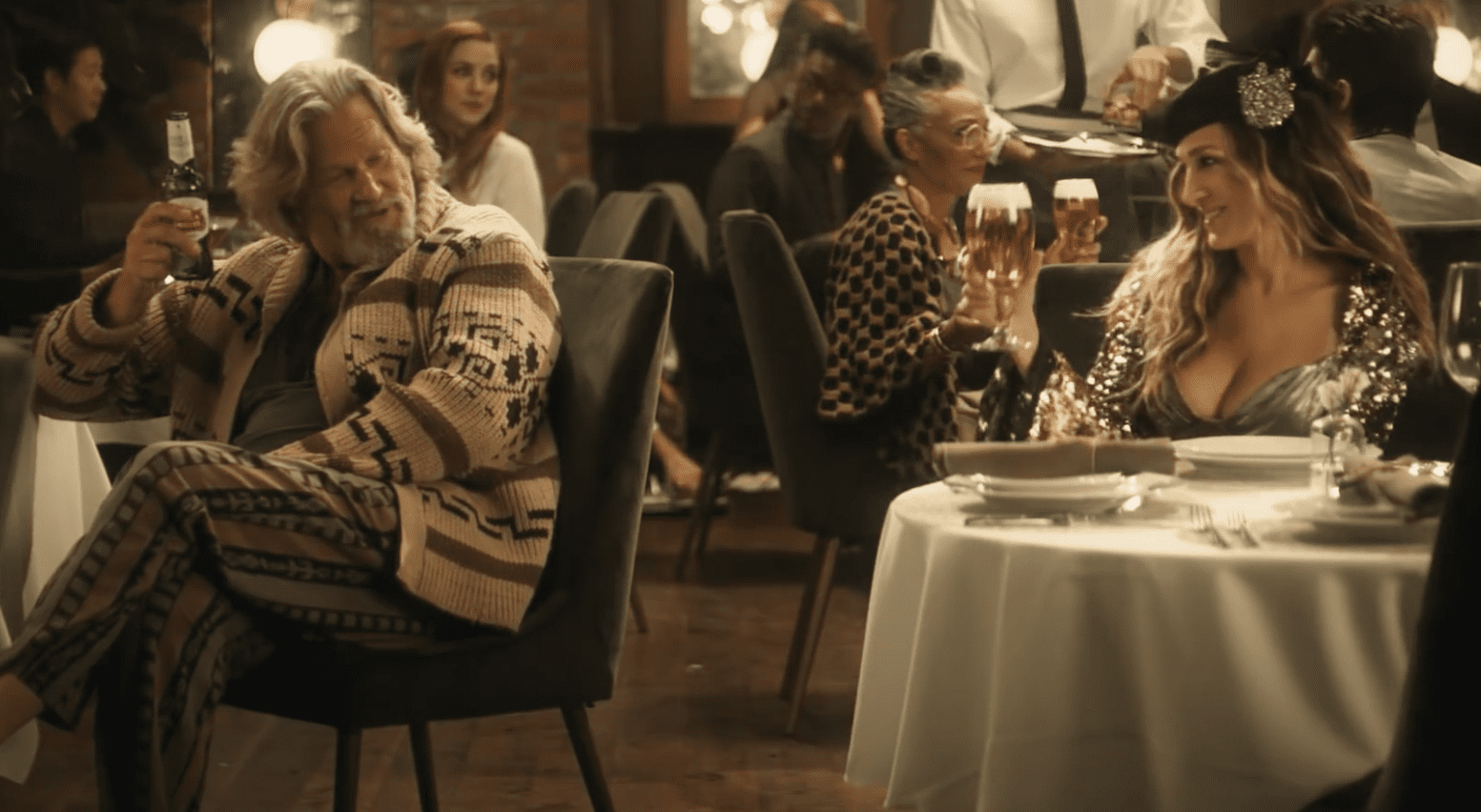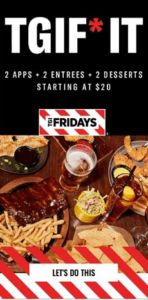For the past few years, I’ve discussed on this blog how Super Bowl advertising demonstrates the power of digital video to complement traditional TV advertising. I’ve asserted that you can obtain as much reach on video as you can through a standard TV ad – or, in some cases, smaller but more targeted reach. Now comes a sensible consideration: what you should do after you launch an ad. This post focuses on the importance of creative parity, or ensuring that your creative is consistent across all your touch points.
Remember This Ad?
What happens after you buy video or TV media is just as important as buying that space itself, sometimes more important. Advertisers capitalizing on a huge event – whether becoming a Super Bowl advertiser or Olympics partner, to cite another example — need to support their sponsorship with TV ads, video ads, display/remarketing banners, emails, social media pushes, and paid search support (to name a few). Take Super Bowl LIII for example: we know that a number of big-name brands will all have commercials airing when the Los Angeles Rams and New England Patriots square off. After Sunday night what will they do? You can’t just fork over the $5 million (or more) for a single 30-second TV spot and call it a day. Instead, you must continue supporting your product. Doritos did a great job of this after the 2018 Super Bowl. You may remember it:
https://youtu.be/4YKfF_XgFtA
Morgan Freeman and Peter Dinklage rapping with an ice and fire theme (also a nice allusion to a certain TV show that Dinklage stars in) caught everyone’s attention and was one of the highlights of last year. That wasn’t the end of this spot. During the weeks after it initially aired, this spot was broken out into two distinct ads, one for Doritos and second for Mountain Dew (both companies are owned by PepsiCo), and both continued to run. You could find it during the middle of a Simpsons episode, during an NBA game, and on YouTube (and the YouTube Network) as 15-second in-stream ads or six-second bumper ads. Pepsi dished out the additional marketing dollars to continue the support of both products.
The Importance of Creative Parity
Of course, advertisers have plenty of tools at their disposal besides video — everything from straight display banner support to remarketing banners, from email to social media posts (organic and paid) and all the way down to branded paid search. You can push any and all those tactics after running an ad like Doritos and Mountain Dew did. Just make sure you practice creative parity, or consistent messaging and creative look/feel across all your advertising assets. Creative parity is harder to achieve as a brand distributes creative assets online and offline. But it’s essential to embrace creative parity or else all the hard work you put into a Super Bowl ad offline will be wasted when your audience sees a confusing and completely different message in the content you share on your website or social media.
Starting at the Top of the Funnel
The discussion of creative parity begins at the top of the sales funnel. In the example of the Super Bowl, the top of the funnel consists of the Super Bowl TV commercial. If we look at the next step down that funnel, we get to YouTube and video placement. It’s here that we want to continue the concept of parity by cutting our TV commercial into 30-second, 15-second, and six-second videos — and create additional demand via targeting (see my 2017 post about video ad targeting, reporting, and monetization). This approach keeps a product top of mind.
However, it’s here where we can start to tweak our messaging ever so slightly. We may cut the initial commercial to include a high-level deal or promotion that occurs, for example “Free Shipping on Orders $40+.” Now you may want to complement video with display banners. Similar to YouTube, we cast a wide net and try to reach a large audience, but, at the same time, still try to narrow it down from the whole of the internet to, say, 18-34-year-olds interested in food and dining or grocery stores. Again, we use our TV commercial as the basis for our display banners so that our imagery is in parity with our top-down strategy. But we might start to add a little more generic promotion or offer, like the Fridays banner from Reddit below:
Fridays calls out a generic 2/2/2 offer for $20 and includes different variations of food and drink so that it appeals to all users.
Mid-Funnel
The next big step in the top-down funnel is retargeting. Retargeting is where we begin to see direct sales, leads, phone calls, and overall conversions happen. Cookies and data have gotten a bad rap recently, from myself included. The criticism is justifiable in several cases, but from an advertiser’s top-down perspective retargeting is a fantastic tool. If we follow our line of thought on parity, we can target those users who have watched the different cuts of our TV commercial and serve them specific banners.
In our case, we want to create a banner based on the TV commercial but begin to layer specific promotions within the banner itself. If we hit a user who has watched a video and a specific brand page on an advertiser’s site or a specific product page on an advertiser’s site, we are able to start layering in specific offers and promos based on those brands/products. Put another way, we need to start dragging those users who have watched our video ads or have visited our site from display banners further down the funnel. In our branding support (video and display) we haven’t really touched on promos or offers but rather attention to the brand — so once we get to our retargeting banners, we can begin to add any promo to our TV commercial-based banner. No matter what promo is used, however, we need to always keep in mind creative parity. Our banners need to match the style, direction, and language of the creative assets that came before it (video and display). But at the at the same time, we may tweak the content slightly to entice users to convert.
Many of these same tactics can be repurposed to social support. Whether it is Facebook, Instagram, Snapchat, or Twitter, these same concepts can and should be applied. The only difference is that you may place your single image banner, video creative, or carousel banner in messenger, stories, news feed, or right hand rail. The social strategy should be looked at in a similar way as display. The importance of parity remains paramount.
Bottom Funnel
After video, display, and social, we begin to get to the bottom of the funnel. It’s here where promotions and call-to-actions really begin to be applied. In some cases the banners themselves disappear, as in branded paid search, but we are able to use similar language mixed in with specific promos based on the search term a user enters. Search A may not necessarily serve the same promo as Search B, but that’s the beauty of paid search. It’s also here that email can be used effectively. Every advertiser has an email list, but how they are broken out may be different (users who haven’t bought in three+ years, users who buy weekly, users who buy product X, etc.). We can take advantage of how an advertisers email list is broken out and target users with specific emails applying creative parity from the TV commercial. Jumping back to our Doritos/Mountain Dew commercial:
- Our email should include Peter Dinklage and Morgan Freeman.
- Our language should make sure to reference fire and ice so that the motif continues.
- But instead of being a generic message we can start to include specific promos for email list A and another offer or promo for email list B.
Parity is the state or condition of being equal. It’s an important part of advertising that isn’t practiced as well as it should. Why? Because the ability to collect and analyze data quickly often compels businesses to change creative on the fly. If an ad creative isn’t working, it can be changed quickly. Those changes can achieve temporary results but hurt creative parity in the long run, leading to your brand becoming disconnected throughout the customer journey.
Look at the Big Picture
I typically end these blog posts with a quote from some bigwig businessperson. But this time, I’m taking a line from an intellectual (specifically an astrophysicist and cosmologist). Martin Rees said, “Most practising scientists focus on ‘bite-sized’ problems that are timely and tractable. The occupational risk is then to lose sight of the big picture.” Sometimes, marketers need to stop and look at the big picture to see if it matches.
Interested in learning more? Contact True Interactive to maximize the value of your digital media. We’re here to help.

